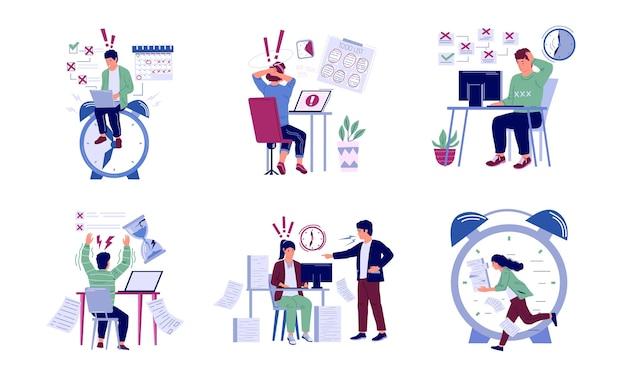Teaching is a dynamic and essential profession that molds minds and shapes the future. Effective teaching involves more than just delivering information; it requires engaging students, fostering critical thinking, and nurturing a love for learning. However, not all teaching practices are created equal, and sometimes, educators may unknowingly fall into the trap of ineffective teaching.
In this blog post, we will delve into the world of ineffective teaching and explore its characteristics, impact, and potential solutions. We will also examine the four skills of communication and their relevance in teaching, as well as the technical skills necessary to excel in the field. Whether you’re an educator seeking to improve your skills or someone looking to understand the elements that hinder effective teaching, this post aims to provide valuable insights and practical tips.
So, let’s dive in and uncover the common pitfalls of ineffective teaching, discover ways to enhance teaching strategies, and ultimately contribute to a more empowered and fruitful educational experience for both teachers and learners.

What is Ineffective Teaching?
Teaching is an art, a delicate dance between educator and student, where knowledge is imparted, minds are molded, and futures are shaped. But what happens when that dance doesn’t quite hit the right steps? Ladies and gentlemen, welcome to the realm of ineffective teaching, where boredom reigns supreme, confusion runs rampant, and the snooze button on your brain becomes your closest ally.
The “Snooze-Fest” Syndrome
We’ve all had that one teacher whose voice could put an insomniac to sleep and whose lectures seemed to drag on for eons. The “Snooze-Fest” syndrome is a prime example of ineffective teaching. It occurs when a teacher fails to engage their students, opting for the monotonous monotone rather than injecting energy and enthusiasm into their lessons. As students struggle to keep their eyelids from drooping, valuable learning opportunities slip through the cracks.
The Curse of the Jargon Monster
Ah, jargon – the secret language of the experts. It’s meant to simplify complex ideas, but all too often, it leaves learners scratching their heads in bewilderment. Ineffective teaching rears its ugly head when educators drown their students in a sea of unintelligible jargon. They forget that not everyone is fluent in the language of their field, causing confusion to spread like wildfire. It’s as if they’ve joined a secret society where only the chosen few hold the keys to understanding. Cue the frustrated sighs and puzzled looks.
The “Sink or Swim” Approach
Picture this: you’re thrown into the deep end of a swimming pool without any lessons, floaties, or a lifeguard in sight. That’s the “sink or swim” approach to teaching, and it’s as ineffective as trying to navigate treacherous waters without a life vest. This approach is characterized by a lack of support, guidance, and clear expectations from the teacher. Students are expected to fend for themselves, leading to feelings of overwhelm and disconnectedness. Just like a floundering fish, they struggle to keep up, desperately gasping for air.
The All-Powerful Monologue
In the land of ineffective teaching, the monologue reigns supreme, drowning out any potential for meaningful conversation or student engagement. It’s a one-man show, where the teacher holds court and the students become mere spectators, passive observers in their own learning journey. The all-powerful monologue fails to recognize the importance of active participation, collaboration, and the free exchange of ideas. It’s like trying to create a masterpiece with only one color in your palette—a dreary, one-dimensional experience.
The Not-So-Grand Performer
Teaching is not just about the knowledge, but how that knowledge is delivered. And in the realm of ineffective teaching, we find the not-so-grand performer, whose lackluster delivery leaves much to be desired. These educators fail to captivate their students, turning potentially exciting topics into yawns-inducing experiences. Their monotone voices and stiff movements make even the most exciting subjects lose their charm. It’s like watching a performance where the actor forgot to bring their emotions along for the ride.
Remember, teaching doesn’t have to be a snooze-fest. By avoiding these pitfalls of ineffective teaching, educators can foster an engaging and lively learning environment that sparks curiosity and ignites a passion for knowledge. So let’s bid farewell to the “Snooze-Fest” syndrome, kick the Jargon Monster out the door, and embrace the power of active student engagement. It’s time to unleash the full potential of effective teaching and set students on a path to success.

FAQ: What is ineffective teaching?
What is ineffective teaching
Ineffective teaching refers to teaching methods that fail to engage, inspire, and educate students effectively. It is like trying to teach a fish to ride a bicycle—it just doesn’t work! In ineffective teaching, students often feel bored, confused, and uninterested in the subject matter. It is the opposite of engaging, captivating, and effective teaching methods that foster a love for learning.
What are the four skills of communication
The four skills of communication are speaking, listening, reading, and writing. Just like a delicious pizza needs all its toppings to be truly satisfying, effective communication requires mastering each of these skills. They are the building blocks that enable us to express ourselves clearly, understand others, and engage in meaningful conversations.
What are the characteristics of an ineffective teacher
Oh boy, ineffective teachers are quite the characters! Here are some telltale signs of an ineffective teacher:
-
Lack of enthusiasm: They are as excited about teaching as a sloth trying to break a world sprinting record. Boring!
-
Poor organization: Their lesson plans are more chaotic than a squirrel in a library. No wonder students are left scratching their heads.
-
Unresponsive to student needs: Students might as well be invisible because ineffective teachers rarely tailor their lessons to accommodate different learning styles or address individual concerns. Yawn!
-
Lack of creativity: These teachers are stuck in their ways, unwilling to explore new teaching methods or incorporate fun activities. Goodbye, creativity, hello, boredom!
How can I improve my teaching skills
Improving your teaching skills is like honing your superpowers—exciting and empowering! Here are a few ways you can become an effective teacher:
-
Continuous learning: Keep up with the latest trends and research in education. Attend workshops, conferences, and online courses to expand your knowledge and teaching strategies.
-
Reflective practice: Take time to reflect on your lessons and identify areas for improvement. Ask for feedback from colleagues, students, and even that friendly neighborhood squirrel.
-
Stay organized: Keep your lesson plans, materials, and assessments well-organized and accessible. An organized teacher is like a superhero with a nifty utility belt!
-
Engage students: Be creative in your teaching methods to engage and captivate your students’ attention. Use games, interactive activities, and real-life examples. It’s time to bring that spark of excitement to the classroom!
What are the steps of teaching
Ah, the dance of teaching! Teaching can be broken down into several steps to ensure a smooth and effective learning experience:
-
Planning: Prepare your lesson plan, gather materials, and anticipate potential challenges. Time to put those thinking capes on!
-
Introduction: Capture students’ attention and provide an overview of the lesson. Think of it as the opening act of a great show!
-
Content delivery: Present the main concepts, explain theories, and provide examples to enhance understanding. Be the master of clarity!
-
Application: Engage students in activities that allow them to apply what they have learned. Learning by doing is the key!
-
Assessment: Evaluate student understanding through quizzes, tests, or creative projects. Let them showcase their newfound knowledge!
-
Feedback: Provide constructive feedback to students, highlighting their strengths and areas for improvement. This ain’t the feedback sandwich—you’re here to help them grow!
What are the 4 C’s in teaching
Teaching isn’t all about equations and essays; it’s about nurturing students’ growth and development. The 4 C’s of teaching encompass these crucial aspects:
-
Communication: Foster clear and effective communication with your students. Open those lines of communication wider than a hungry bear’s mouth at a picnic!
-
Collaboration: Encourage collaboration among students—let them work together like the Avengers, solving problems and supporting each other.
-
Critical thinking: Encourage students to think critically, analyze information, and develop independent thoughts. It’s time to unleash their inner Einstein!
-
Creativity: Embrace creativity in the classroom like Picasso with a set of paintbrushes. Encourage students to think outside the box and express themselves in unique ways.
What is the best way to teach someone to read
Teaching someone to read is like planting a seed and nurturing it until it flourishes into a beautiful flower. Here are the essential steps to guide someone on their reading journey:
-
Start with phonics: Help them understand the relationship between sounds and letters. Teach them the phonetic alphabet, and watch their reading skills bloom like a tulip in spring!
-
Build vocabulary: Introduce new words through reading, discussions, and word games. The more words they know, the richer their reading experience will be!
-
Practice reading aloud: Encourage them to read aloud, practicing pronunciation, fluency, and expression. It’s time to let their inner thespian shine!
-
Provide engaging reading materials: Find books, articles, and stories that match their interests and reading level. The right book can be a portal to magical worlds!
What are the technical skills of a teacher
Apart from being educational superheroes, teachers need to have an arsenal of technical skills. Here are a few that will make you the Tony Stark of the classroom:
-
Digital literacy: Embrace technology, navigate digital tools, and integrate them into your teaching strategies. You’ll be like a computer wizard—minus the pointy hat!
-
Multimedia creation: Develop skills in creating engaging presentations, videos, and interactive materials. Say goodbye to boring blackboards and hello to a world of creativity!
-
Data analysis: Analyze student performance data to identify areas for improvement and tailor your teaching approach. You’ll be swimming in insightful data like Scrooge McDuck in his vault!
-
Problem-solving: Show off your problem-solving skills by finding creative solutions to classroom challenges. You’ll be like Sherlock Holmes, cracking the case of the disengaged students!
How can you help an ineffective teacher
Saving the day by helping an ineffective teacher? Now that’s a worthy quest! Here are a few ways to offer support:
-
Lead by example: Show them what effective teaching looks like through your own classroom practices. Be the superhero they aspire to be!
-
Offer resources: Share educational articles, books, and online courses that can help them improve their teaching skills. The knowledge you pass on can ignite their spark!
-
Provide constructive feedback: Offer friendly and constructive feedback about their teaching methods. Remember, we’re here to build them up, not tear them down!
-
Collaborate: Encourage collaboration among teachers. Share ideas, brainstorm strategies, and learn from each other. A problem shared is a problem halved!
With these strategies, you’ll be armed and ready to transform the world, one ineffective teacher at a time!
Now it’s your turn to be an extraordinary teacher and bring joy, inspiration, and effective education to your students. Let the learning adventures begin!
